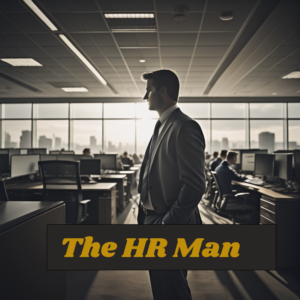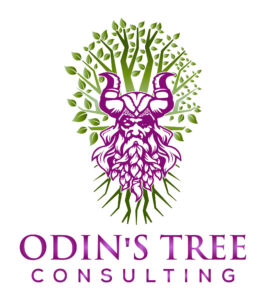Picture a world where your career prospects hinge on an algorithm’s split-second decision. It’s not science fiction—it’s happening right now in HR departments across the globe. And it’s a problem.
The allure is undeniable. AI promises to streamline hiring, reduce costs, and eliminate human bias. But here’s the uncomfortable truth: we’re discovering that AI in HR isn’t eliminating bias—it’s automating it, hiding it behind a veneer of technological sophistication, and potentially creating legal nightmares for companies.
Just ask Workday, whose AI screening tools recently landed them in hot water. A federal court has allowed a discrimination lawsuit to proceed, marking a watershed moment in the battle over AI-driven hiring practices. The message is clear: AI vendors can be held legally responsible when their algorithms discriminate.
The problem runs deeper than isolated incidents. A recent study found that popular AI resume screeners consistently favor white and male candidates, perpetuating the very biases they were meant to eliminate. Even the United Nations, an organization dedicated to global equality, faced backlash when their facial recognition hiring tool showed consistent racial bias.
But bias is just the tip of the iceberg. AI fails spectacularly at understanding the nuanced aspects of human potential. Think about your best employees. What makes them exceptional? Is it their ability to think creatively under pressure? Their emotional intelligence in handling difficult situations? Their capacity to inspire others? These quintessentially human qualities often defy algorithmic assessment.
Consider the classic example of the unconventional candidate—someone who took an unusual career path or developed valuable skills through non-traditional means. AI systems, trained on conventional patterns, routinely reject these diamonds in the rough. Amazon learned this lesson the hard way when they had to abandon their AI hiring system after discovering it penalized resumes containing words like “women’s” and favored aggressive verbs typically found in male candidates’ applications.
The legal implications are staggering. As we enter 2025, employment discrimination lawsuits involving AI are on the rise. Companies face a double bind: they must prove their AI systems aren’t discriminatory while simultaneously demonstrating they understand how these systems make decisions—a task that’s often impossible given the “black box” nature of many AI algorithms.
AI’s inability to grasp context can lead to absurd outcomes. A candidate might have a gap in their employment history due to caring for a sick family member—a situation that could demonstrate valuable qualities like dedication and responsibility. But an AI system sees only the gap, not the growth opportunity it represents.
The human element in HR isn’t just a nice-to-have—it’s essential. Human recruiters can read between the lines, sense potential, and understand the intangible qualities that make someone a perfect fit for a company’s culture. They can have meaningful conversations about career aspirations, assess cultural fit through nuanced interactions, and make judgment calls based on years of experience working with actual humans.
But perhaps the most dangerous application of AI in HR is its use in employee relations and performance prediction. Imagine having your entire career trajectory determined by an algorithm that reduces your complex human experience to a set of data points. It’s not just problematic—it’s potentially catastrophic.
Let’s start with employee relations. HR professionals are finding that AI tools lack the nuanced understanding that human HR professionals bring to decision-making. Think about the last time you had a workplace conflict. Was it a straightforward situation that could be resolved by applying a set of rules? Or did it require understanding office dynamics, personal circumstances, and the subtle interplay of personalities?
The monitoring aspect is particularly troubling. Recent studies show that AI surveillance in the workplace is actually decreasing productivity, creating an environment of distrust and resistance. Employees feel watched, judged, and reduced to numbers in a spreadsheet, leading to decreased morale and increased turnover.
When it comes to performance prediction, the situation becomes even more precarious. AI tools in performance management expose organizations to significant privacy and security risks. Consider these scenarios:
An employee takes extended leave to care for a sick parent, causing their productivity metrics to dip. The AI flags them as “underperforming,” failing to understand the temporary nature of the situation or the valuable caregiving skills they’re developing.
A creative professional spends time brainstorming and sketching ideas—activities that don’t translate well into quantifiable data. The AI system marks them as “inefficient” because it can’t measure the quality of creative thought.
A team member who excels at mentoring junior colleagues and maintaining team morale gets flagged for “excessive socializing” because the AI can’t differentiate between water cooler chat and valuable relationship building.
One of the biggest challenges is that many AI tools rely on third-party systems, raising serious questions about data privacy and security. Who owns this sensitive employee data? How is it being used? What happens when it falls into the wrong hands?
The legal implications are staggering. Imagine defending a wrongful termination suit where the decision was based on an AI system’s prediction about future performance—a prediction that can’t be fully explained because the AI’s decision-making process is opaque. How do you justify decisions based on algorithms you can’t fully understand?
These systems often create self-fulfilling prophecies. If an AI system predicts an employee might underperform or leave the company, managers might unconsciously treat that employee differently, actually causing the predicted outcome. It’s a digital version of the Pygmalion effect, but with career-destroying potential.
The human element in performance management isn’t just about gathering data—it’s about understanding context, providing meaningful feedback, and supporting growth. A good manager knows when an employee is struggling because of personal issues, when they need more support versus more challenge, and when to push versus when to be patient. These are nuanced decisions that require emotional intelligence and human judgment—qualities that AI simply cannot replicate.
Using AI for employee relations and performance prediction isn’t just misguided—it’s a ticking time bomb of legal liability and employee dissatisfaction. It reduces the rich tapestry of human workplace interaction to a series of data points, missing the forest for the trees. In our quest for efficiency, we risk creating a workplace that’s efficient but soulless, data-rich but understanding-poor.
As we navigate this technological frontier, we must remember that HR is fundamentally about humans managing human relationships. AI can be a powerful tool for handling repetitive tasks and processing large amounts of data, but it should never be the ultimate arbiter of human potential.
The solution isn’t to abandon AI entirely but to understand its limitations. Use it for what it’s good at—screening for basic qualifications, scheduling interviews, or managing administrative tasks. But leave the nuanced, complex decisions about human potential to actual humans who can understand context, empathize with candidates, and make informed judgments based on the full spectrum of human experience.
The stakes are too high to get this wrong. Every time an AI system cannot recognize human potential, we’re not just risking legal trouble—we’re missing out on talented individuals who could transform our organizations. In our rush to embrace technological efficiency, we must not forget that the “human” in Human Resources isn’t just a word—it’s the whole point.




